Emerich Betsy Piano
Emerich Betsy pianos were constructed between 1852 and 1871.
These pianos were made with Burl Wood, each finished with hand craftsmanship inclusive of hand-carved gold and pearl inlay, and custom tailored for their owner.
Only the very wealthy afforded the luxury of these precision instruments.
Each piano was built to fit the specific height and body of it’s owner, therefore; the height of the keyboard varies from piano to piano.
Emerich Betsy pianos were produced at a Piano Factory in WEIN, (address - Wieden, Mitterstein NO.13) around 1852 in Vienna, Austria. Production continued through 1871. They won awards at the 1854 German Exposition for Industry and Trades. Emerich Betsy has a long history in piano building. The family was a friend with 2 students of Beethoven and built custom pianos for them. Emerich Betsy was generally considered among the most prestigious piano makers in Austria, building only a few pianos per year. They believed in doing all the work by hand.
Many attest Emerich Betsy is the ultimate piano for appreciating the wonderful music of Brahms and other great composers of his era who composed on this type of piano. The music appears clean & crisp, a clarity which cannot be achieved with an over-strung American piano that often tends to blend musical colors together. These straight-strung, large European grand instruments possess specific tonal colors in the individual registers of the piano, coupled with the front-to-back orientation of the soundboard grain.
The musical sound they produce cannot be reproduced by any other piano on the market today or that has been manufactured in the last 80+ years. Both Beethoven and Bach played on similar pianos. The paino owned by the Hart Family Estate was first sold to one of Beethoven’s students, who played on it until his death. It is very possible Beethoven himself played on that particular piano when giving him lessons. Other Emerich Betsy pianos may have a similar historical story to them, because these pianos were custom made for only the most wealthy and most probably very devoted pianists.
It is most unusual that a piano maker, capable of building such large pianos and to such a high degree of precision with the best of materials and deftly perfect workmanship, is not well known. This seems attributable to the few pianos that were made, the loss of great treasures in Europe during both World Wars, and each piano being so specifically designed to fit its owner that resale of them would have been taxing.
As a fully restored antique, these grand pianos have a rather high value to a collector and to the practiced pianist. Fully restored Emerich Betsy pianos have sold for as much as $54,000.
John Casper Emerich: Son of John Adam Emerich and Maria Barbara Riegel, Born 1761
Below can be seen pictures of the 21 remaining Emerich Betsy pianos known to be in existence.
Played on an Emerich Betsy Paino
Richard Burnett tribute - Hammerwood - Beethoven 109 Chopin 2 sonata unequal temperament fortepiano
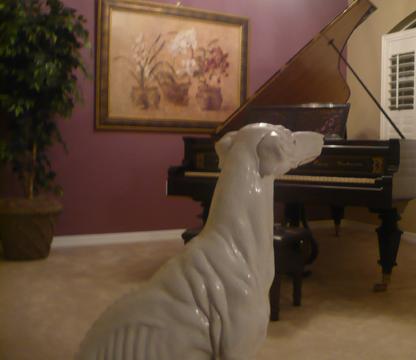

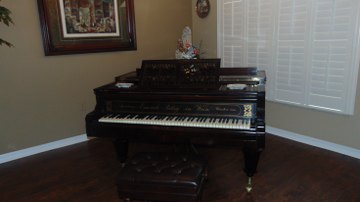
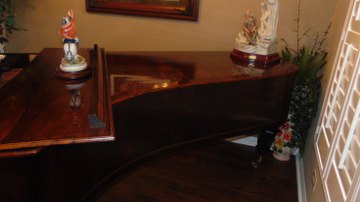
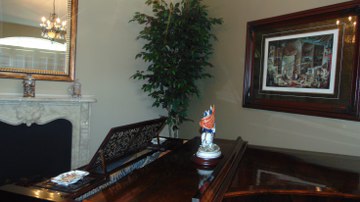
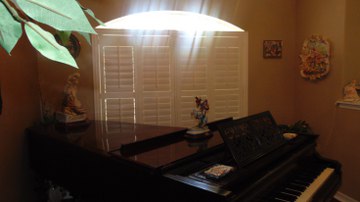
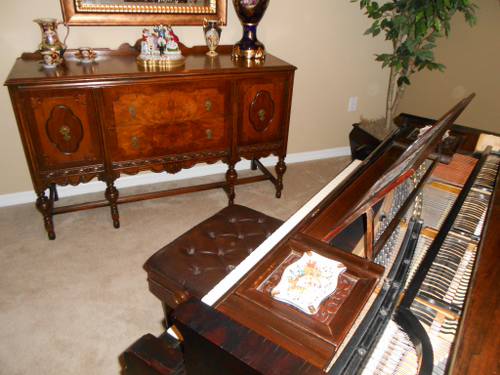
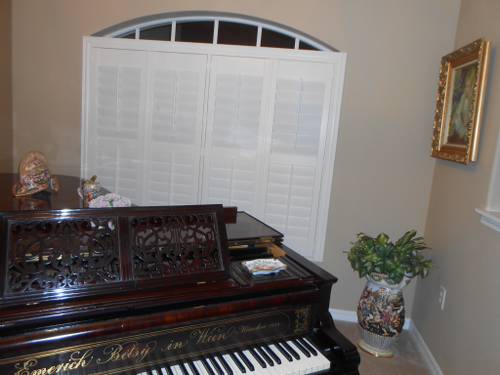
This Betsy piano is build in 1854 and was purchased 26 years ago from antique store Müllendorff in Antwerp Belgium. The current owner had the piano delivered to his castle, which also happens to be in the province of Antwerp. During the delivery of the Betsy piano, the beautiful staircase of the old castle turned out not to withstand the weight of the weight so it had to be reinforced. This piano was used as a play-in piano for the candidates of the many Cantabile (contest) piano concerts that were given at the castle.
The piano is in a very good condition and currently for sale.
Price: €4,500 (Euro).
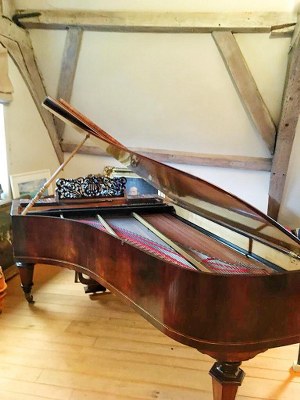
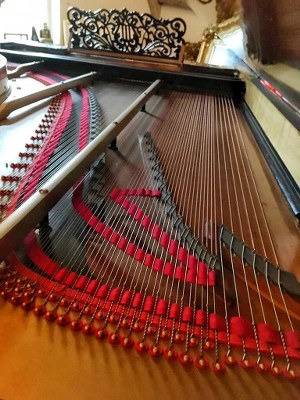
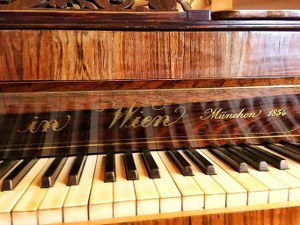
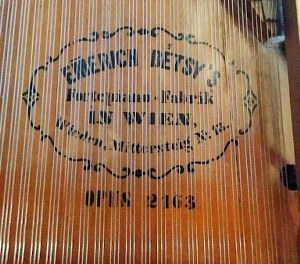
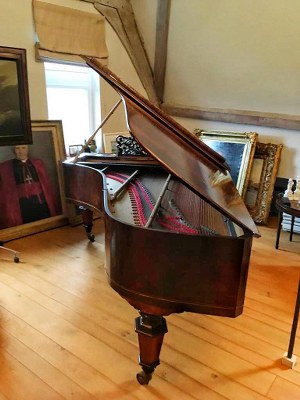
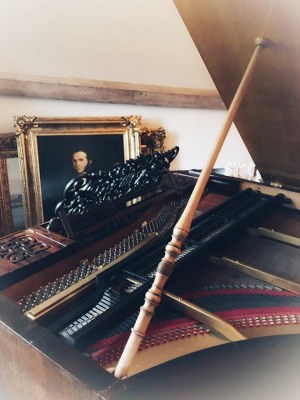
This piano is located in Bethesda, Maryland.
It was originally purchased in Italy at an Antique fair in 2014,
and then restored by artisans in Sassuolo and Bologna, Italy.
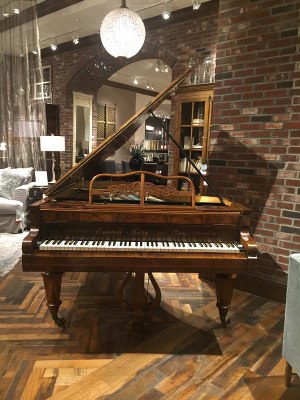
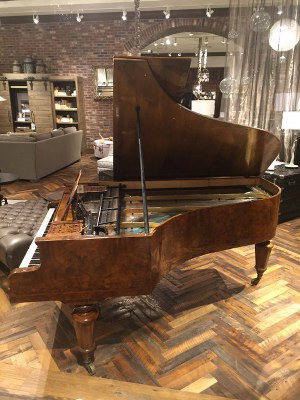
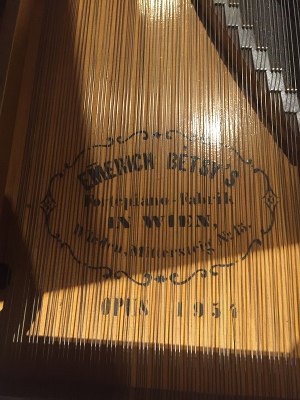
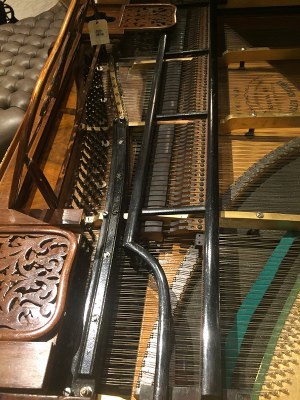
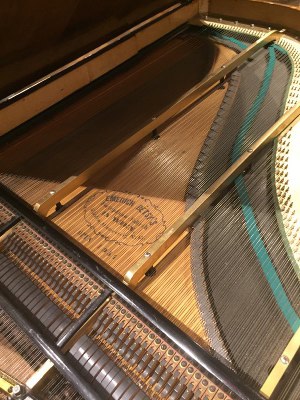
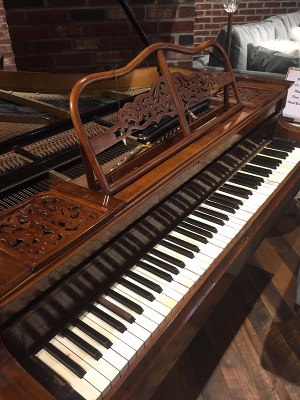
Available for Sale!
More pictures available upon request
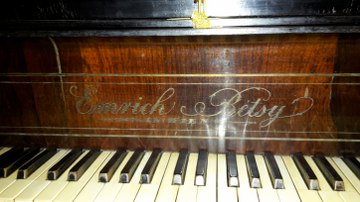
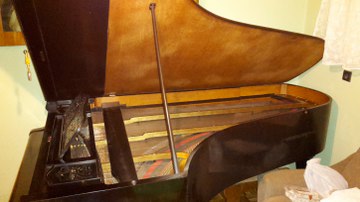
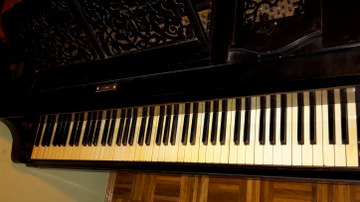
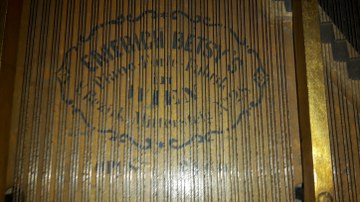
Needs some restoration work.
This piano is located in Nograd, Hungary
This piece needs some restoration work.
The exterior of the piano is in good condition.
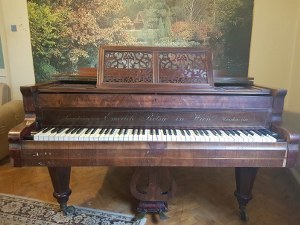
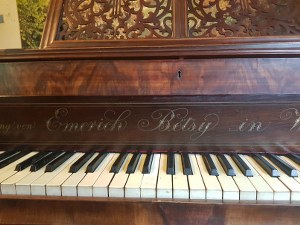
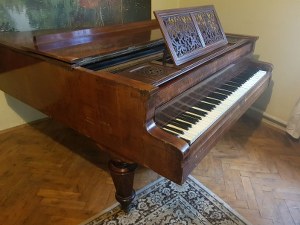
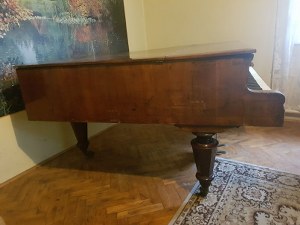
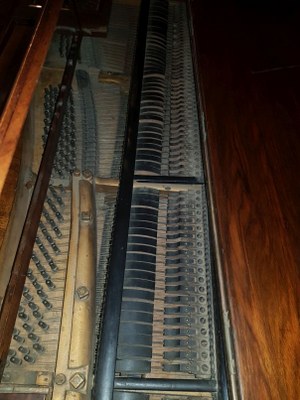
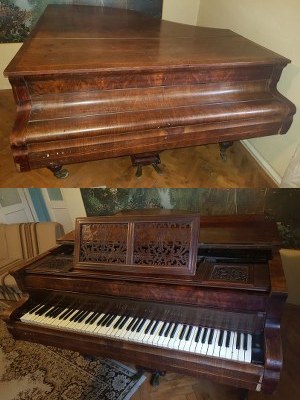
Available for Sale!
More pictures available upon request
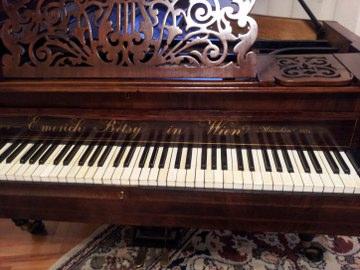
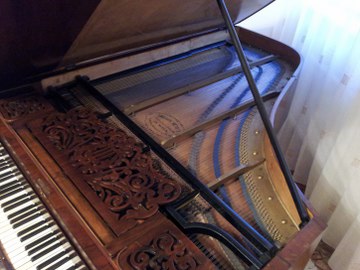
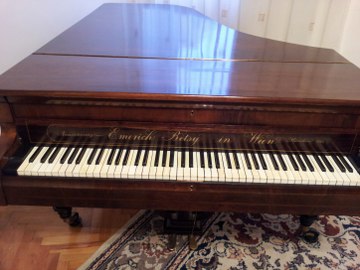
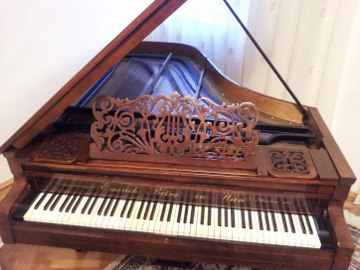
Available for Sale!
Requires Restoration
More pictures available upon request
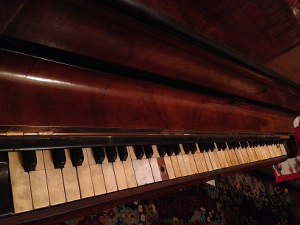
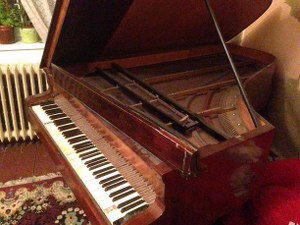
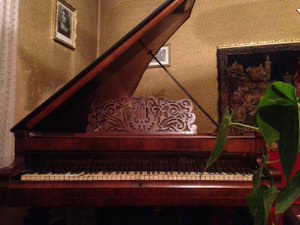
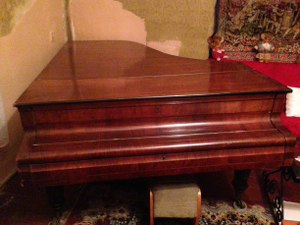

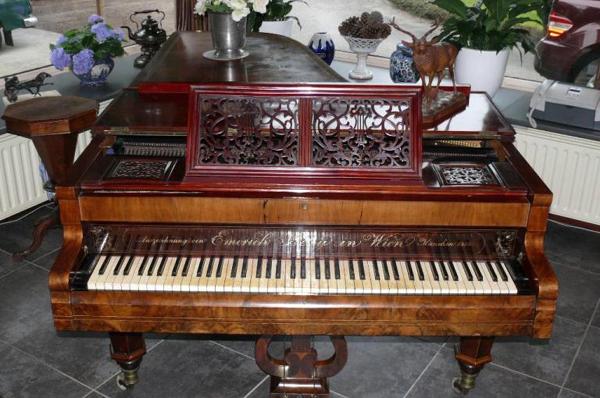
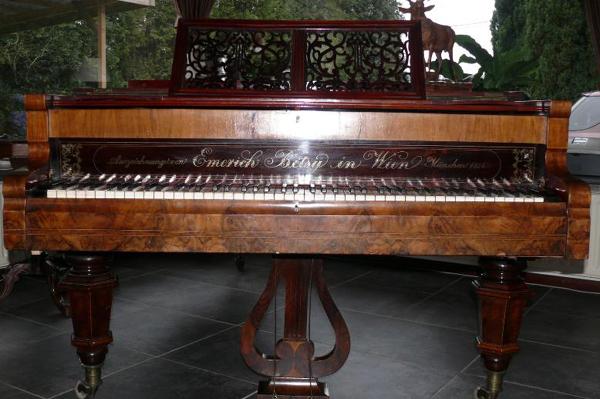
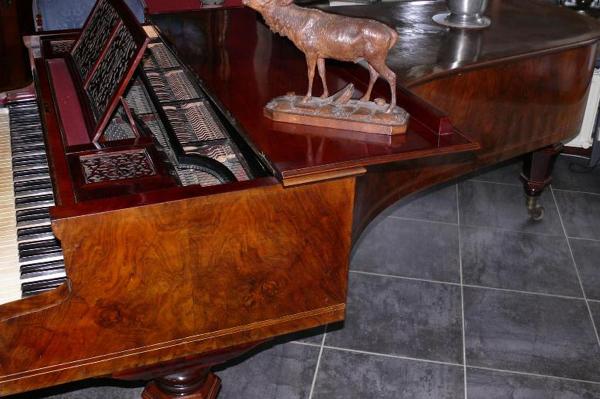
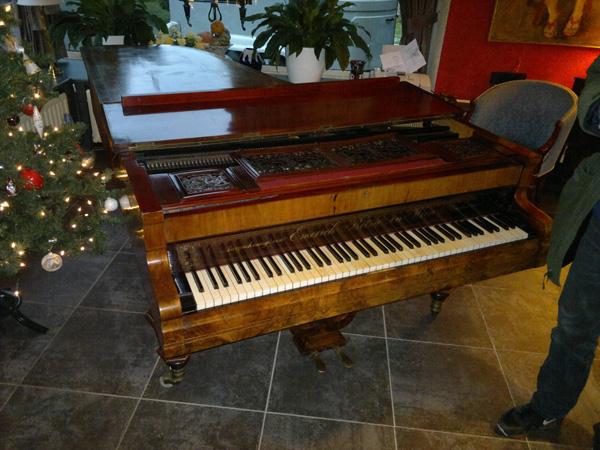
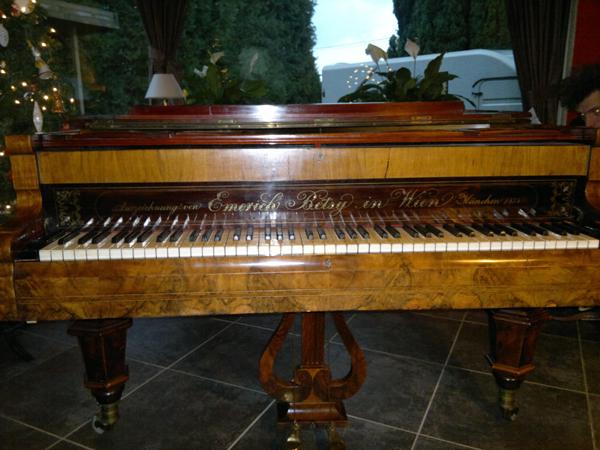
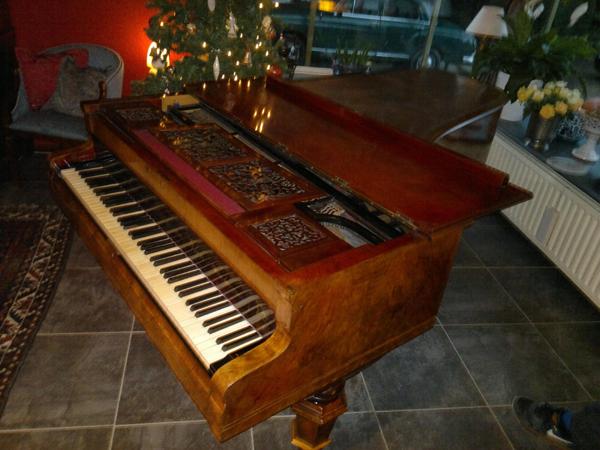
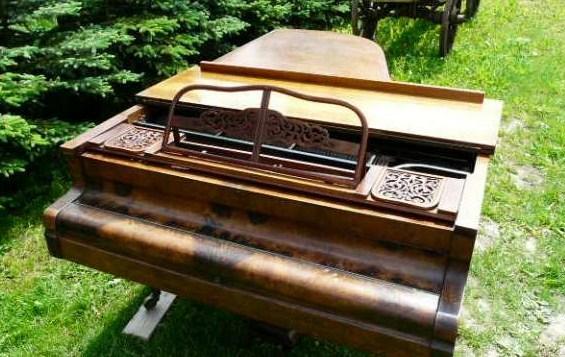
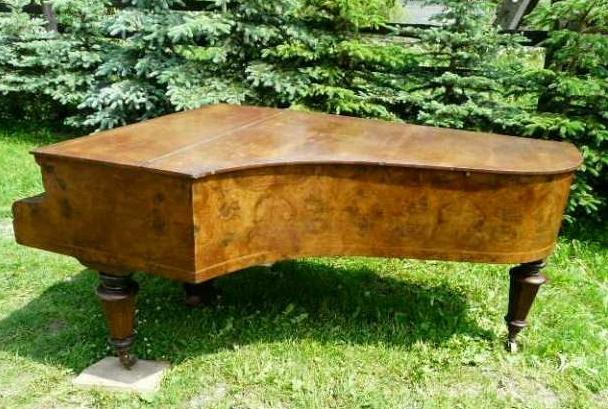
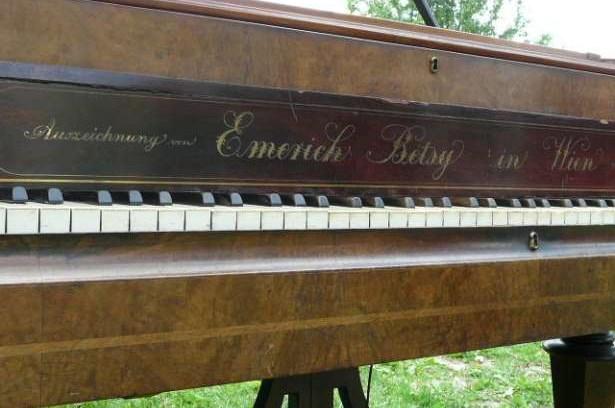
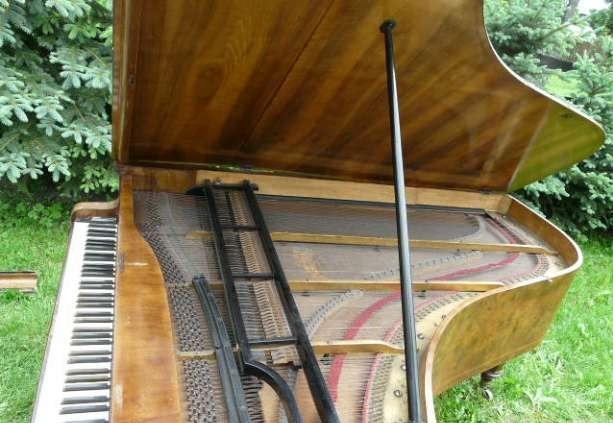
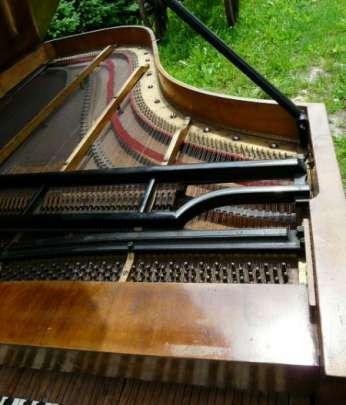
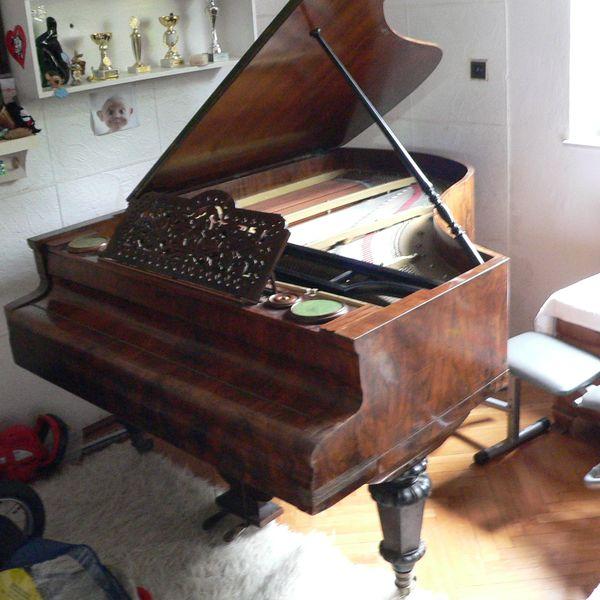
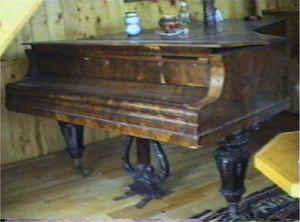
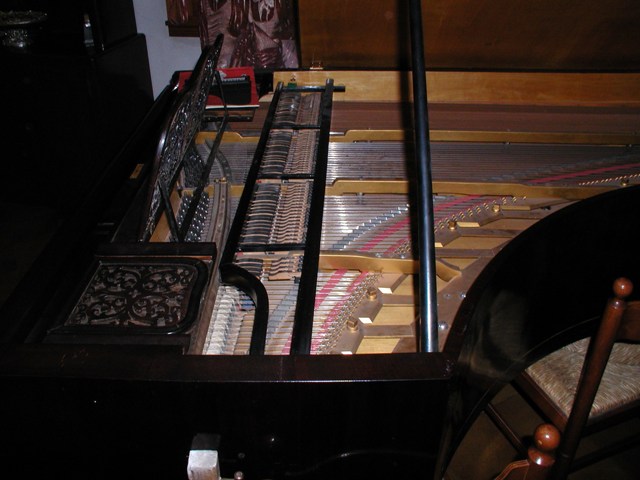
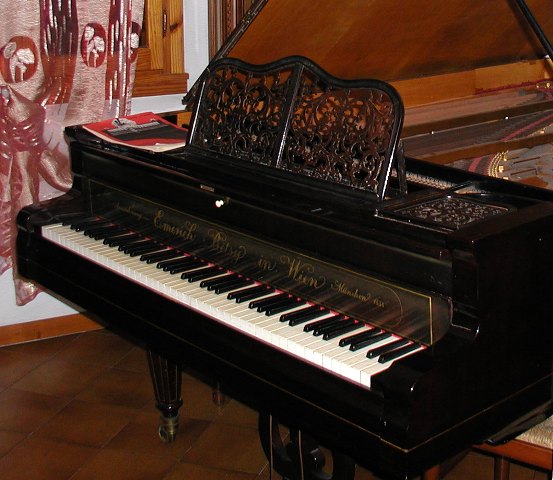
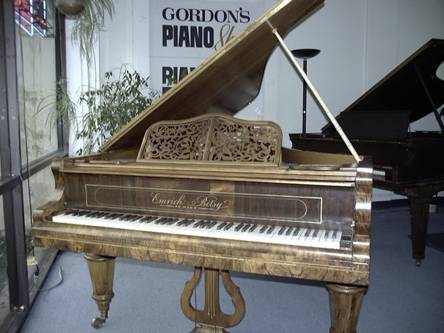
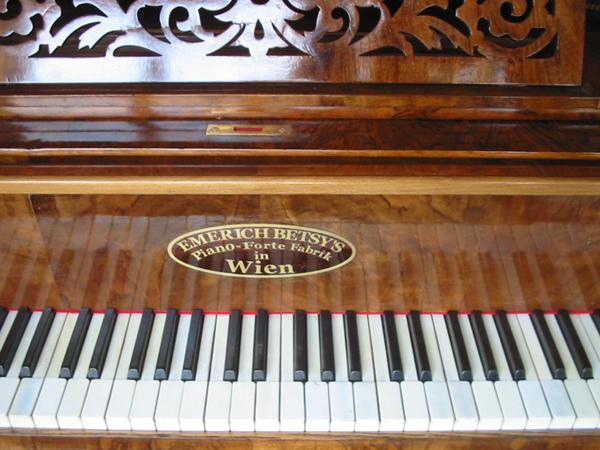
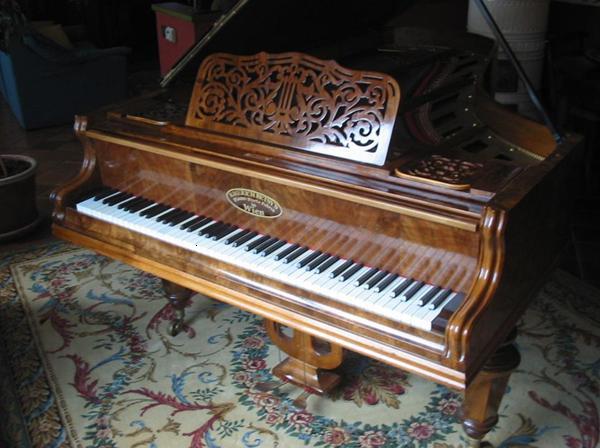
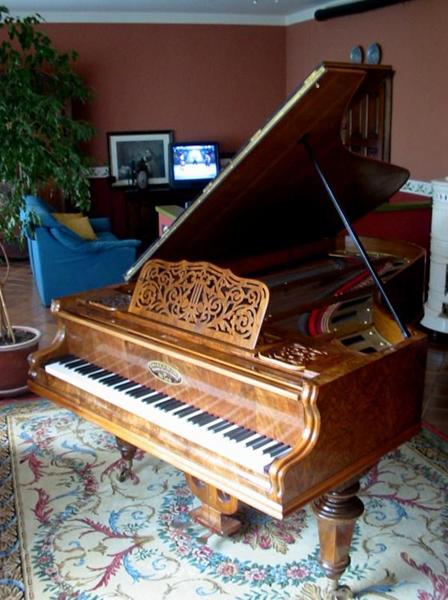
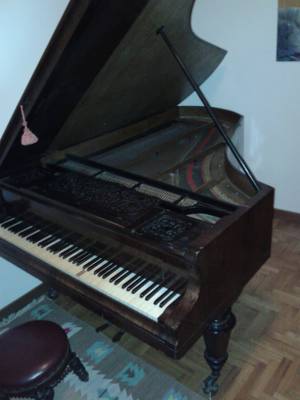
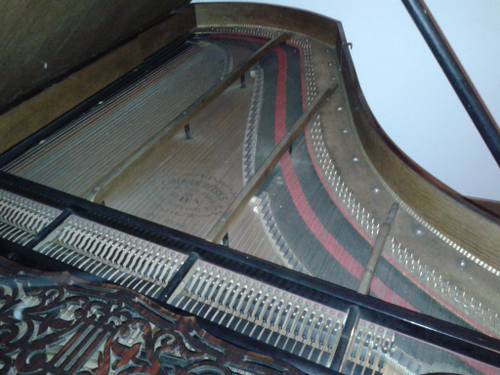
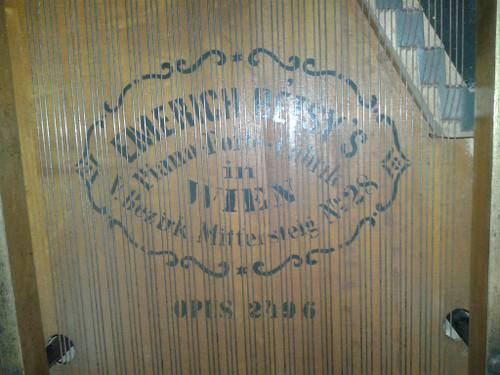
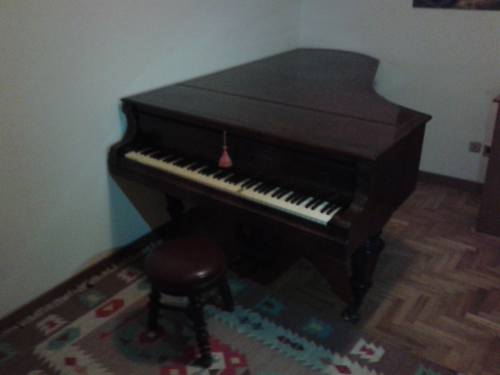
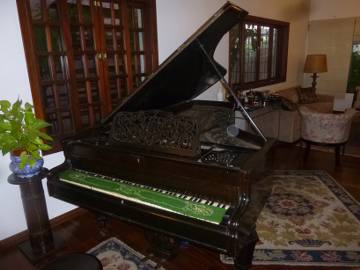
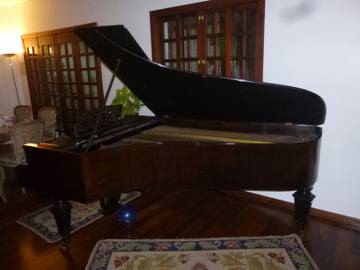
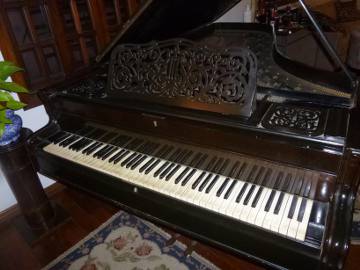
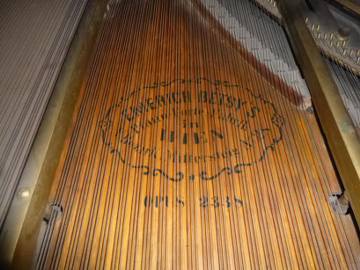
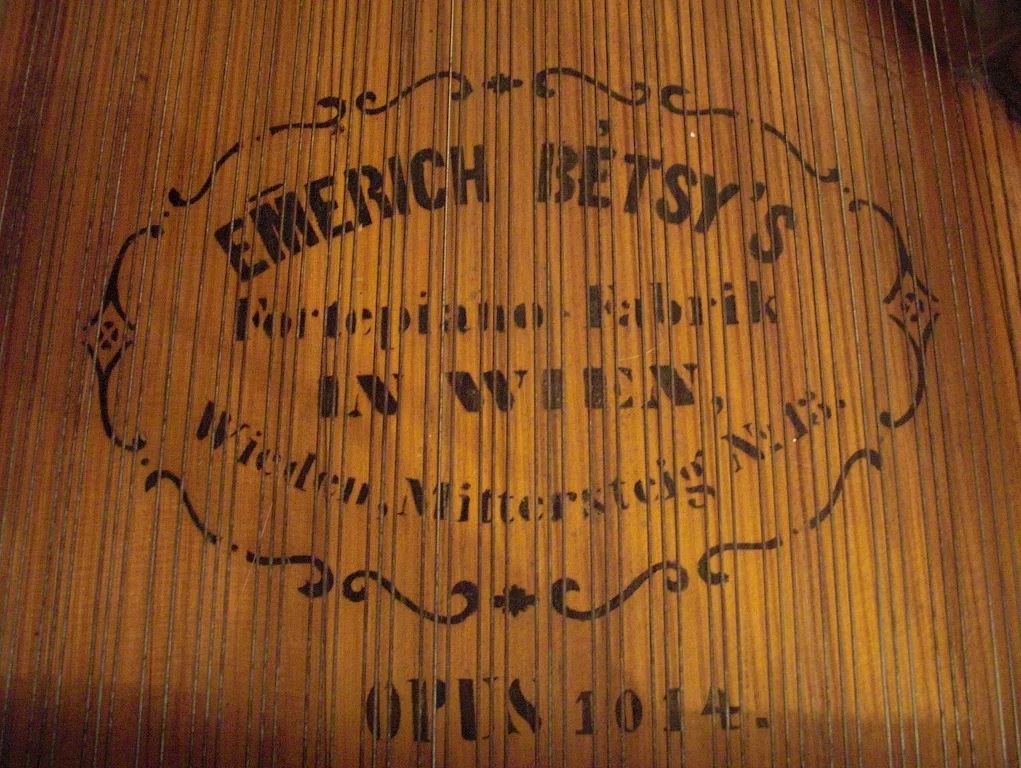
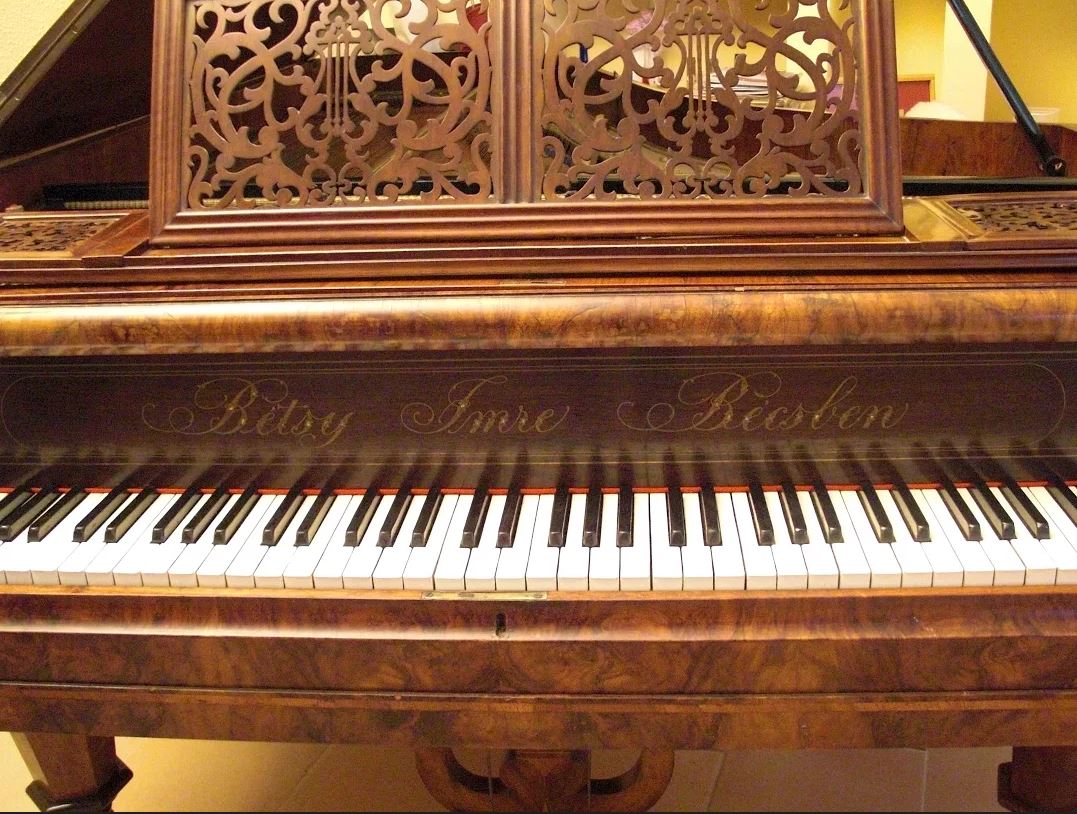
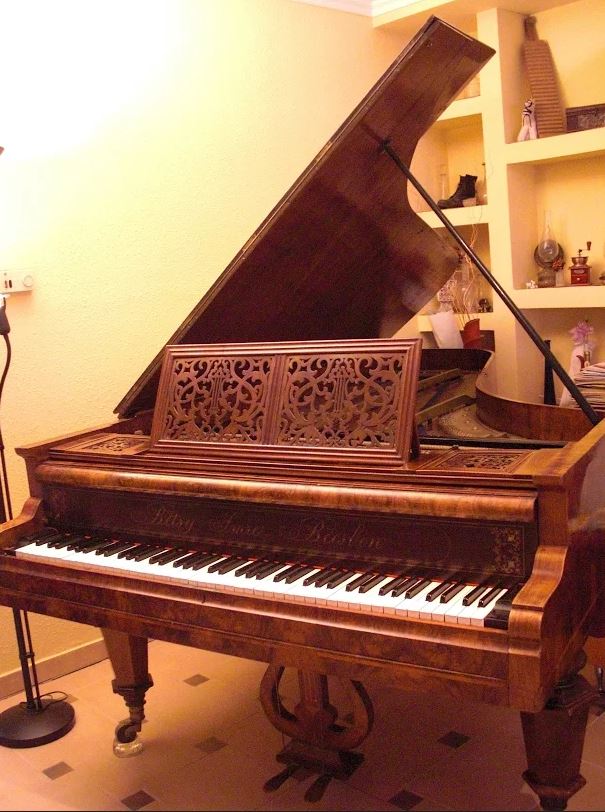
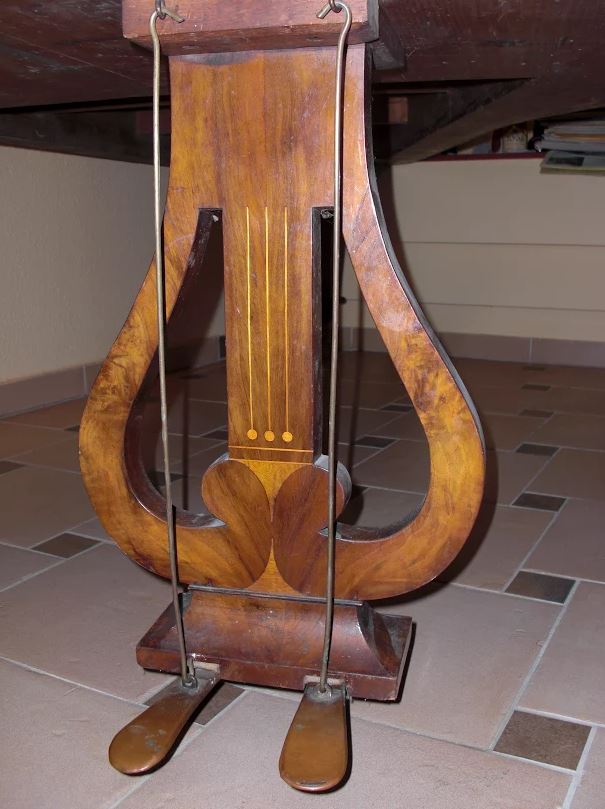
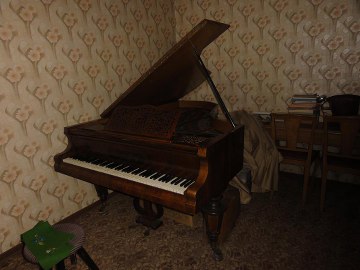
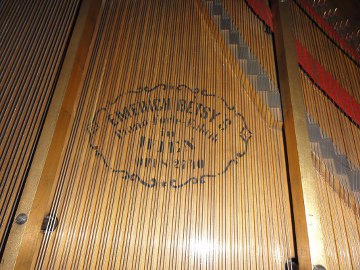
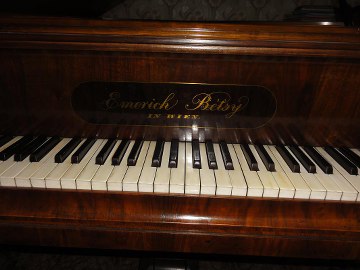
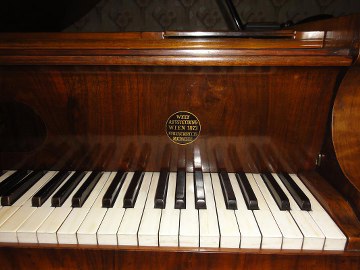
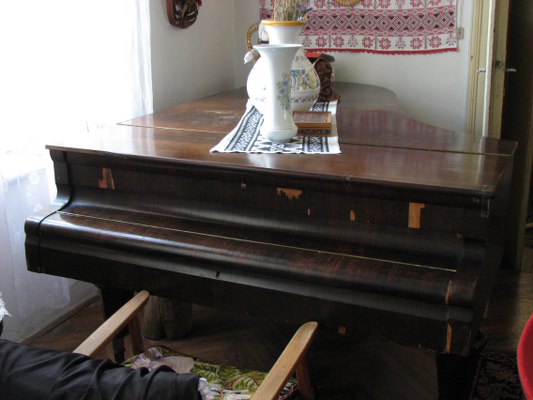
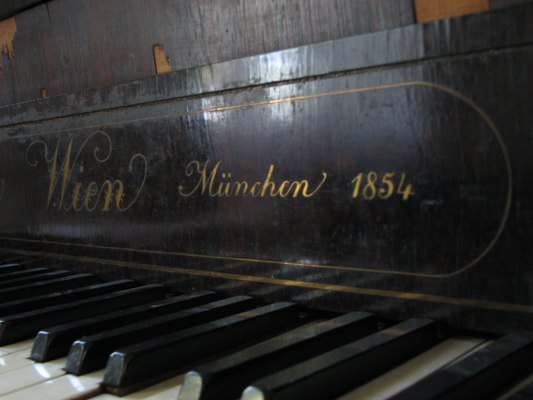
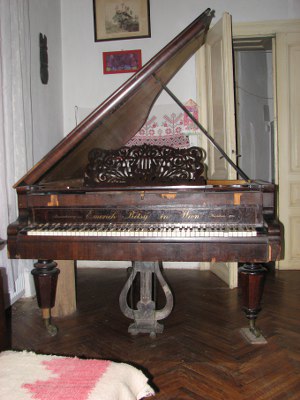

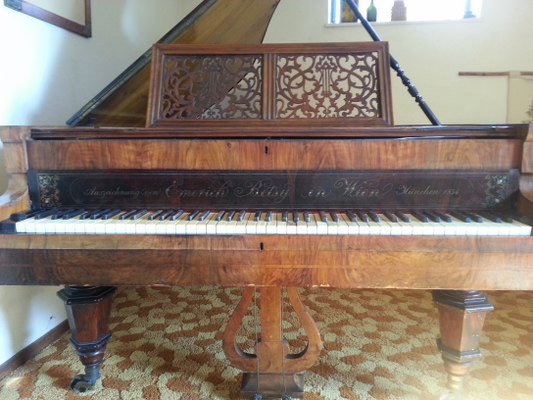
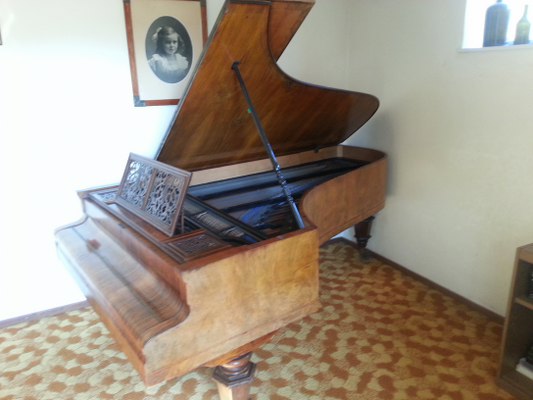
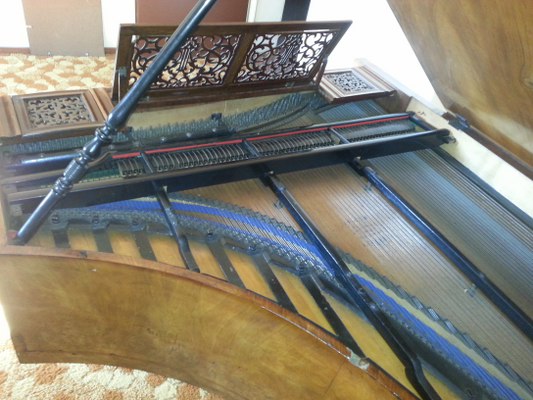

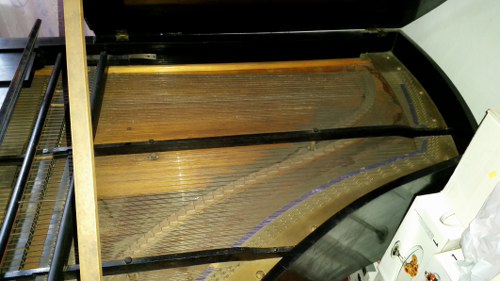
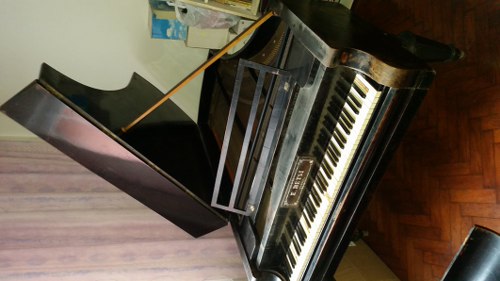
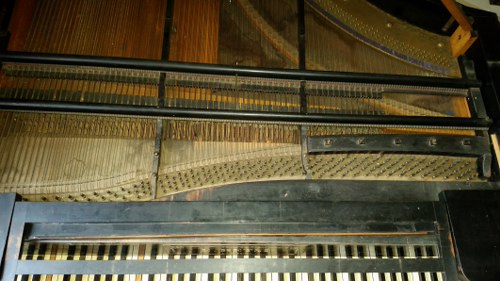
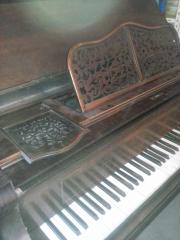
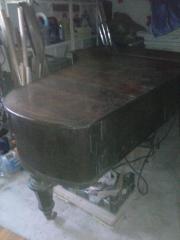
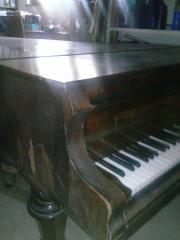

Available for Sale!
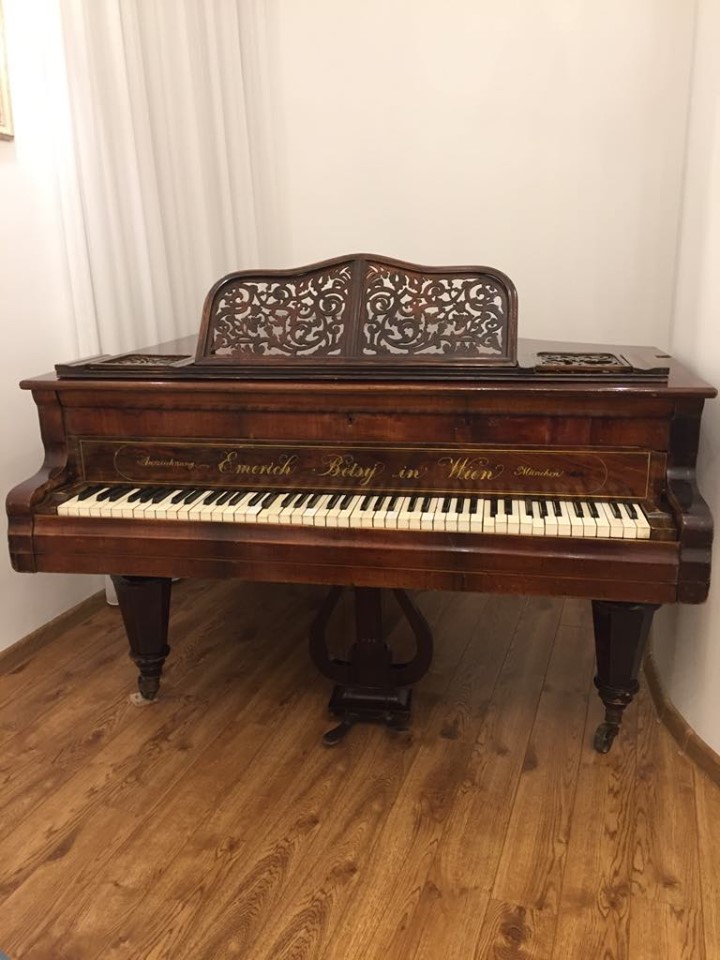
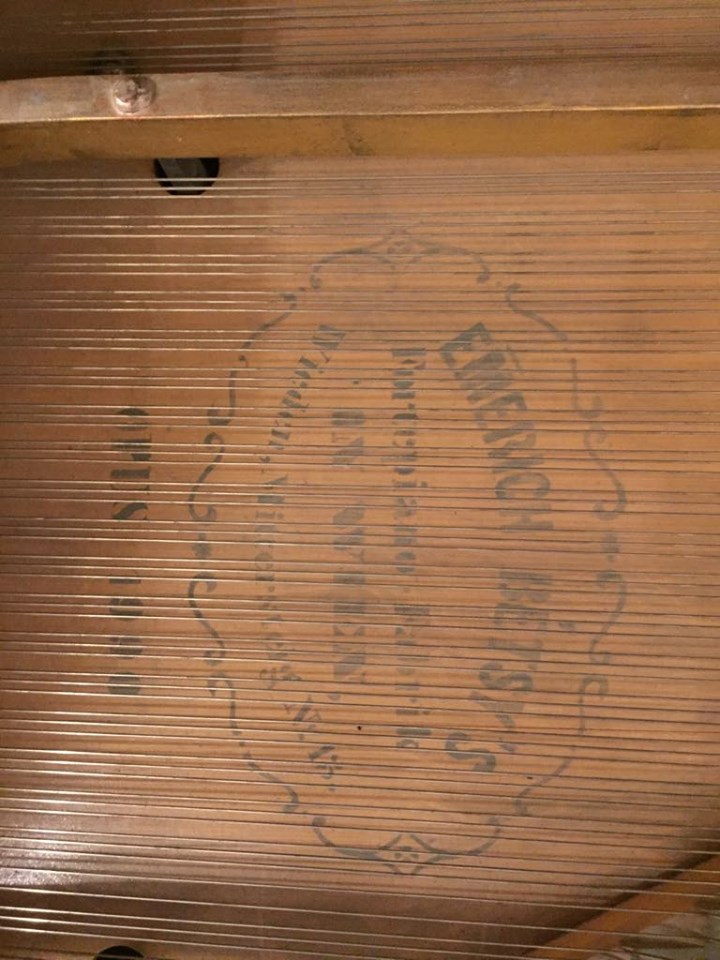
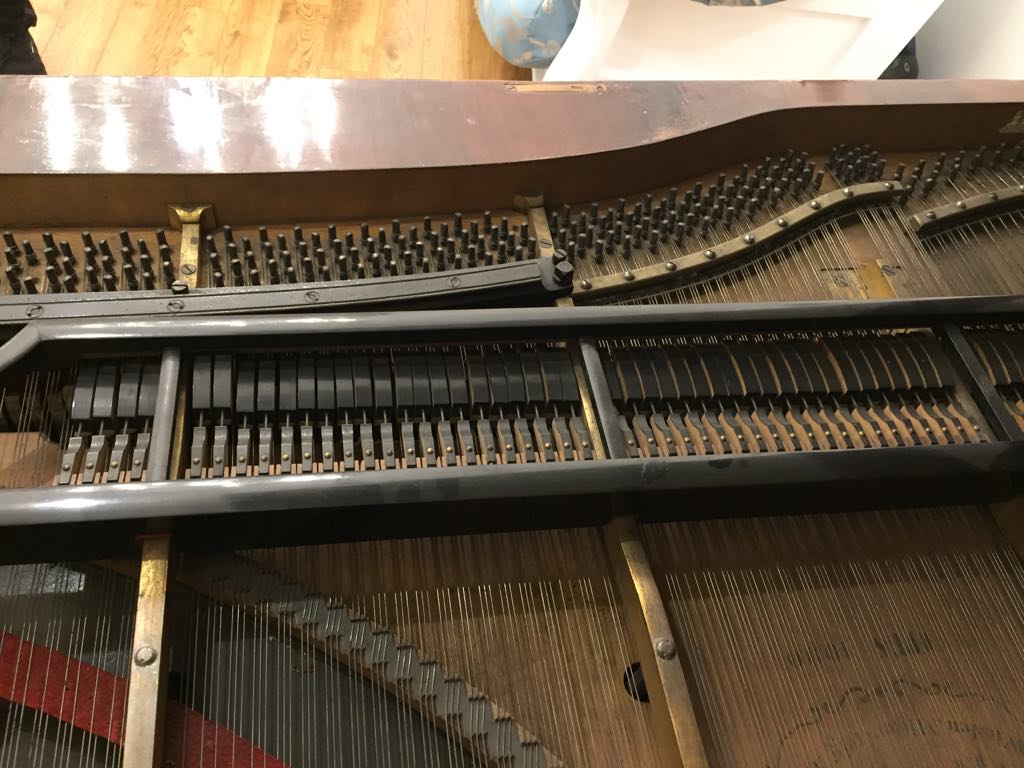
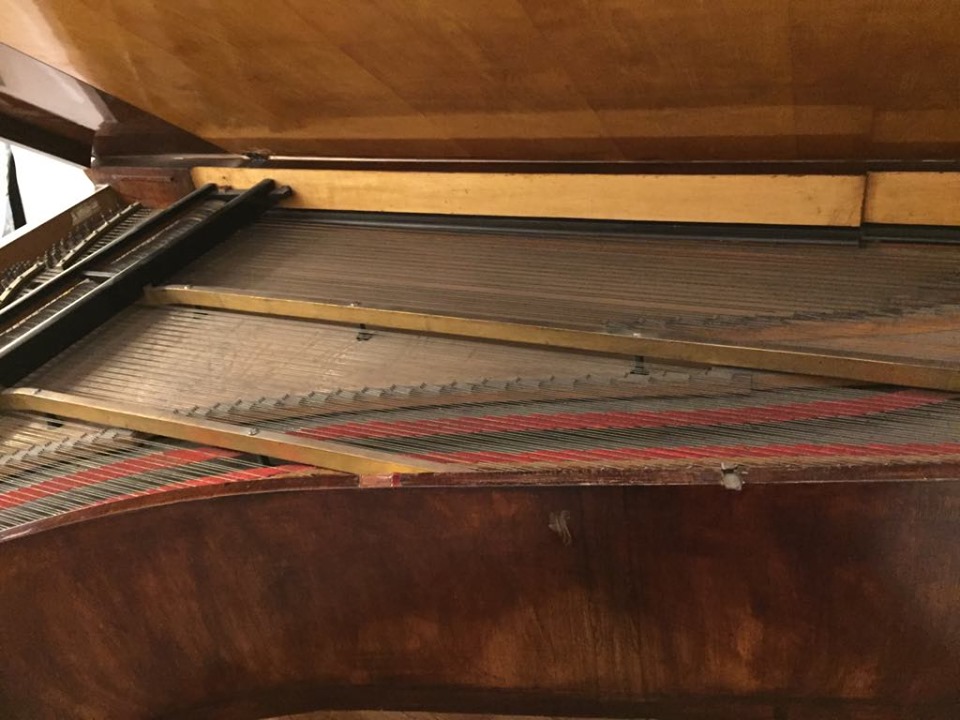
Loved for ages!
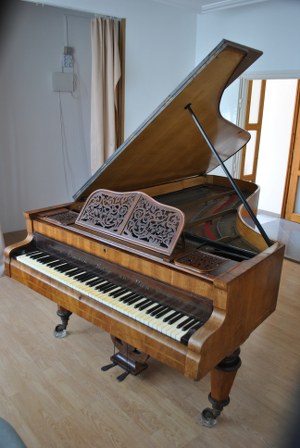
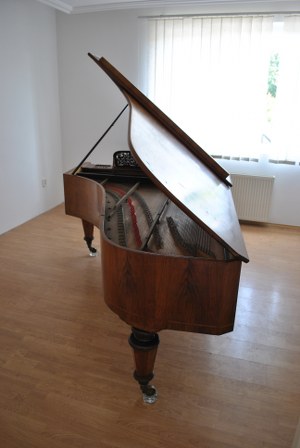
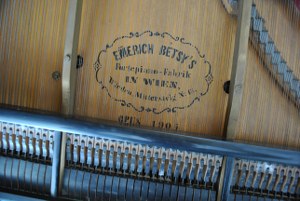
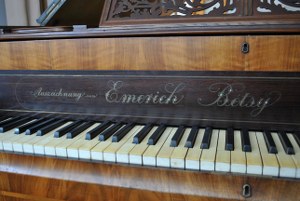
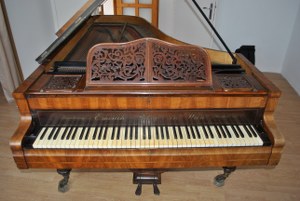
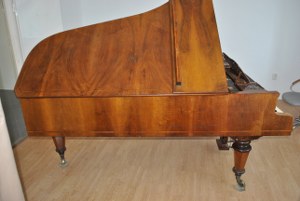
Viva Verona!
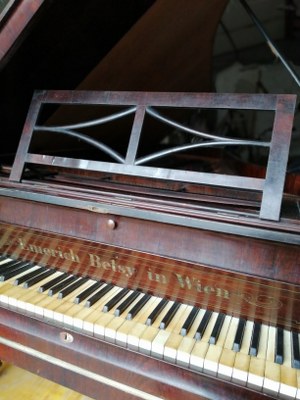
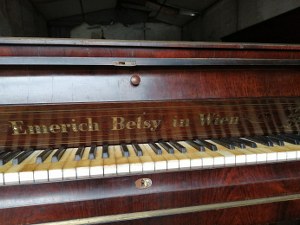
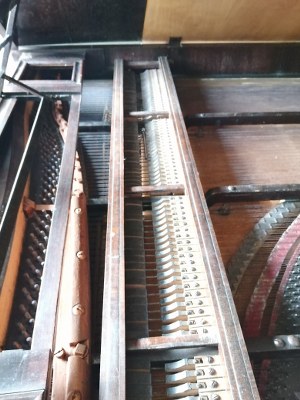
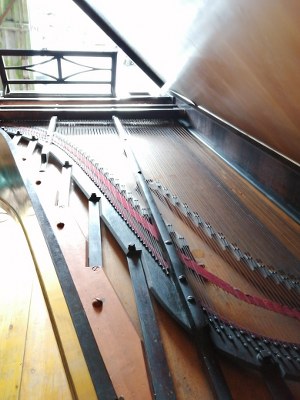
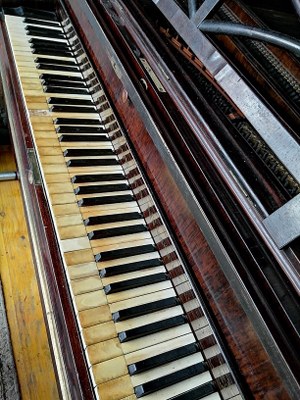
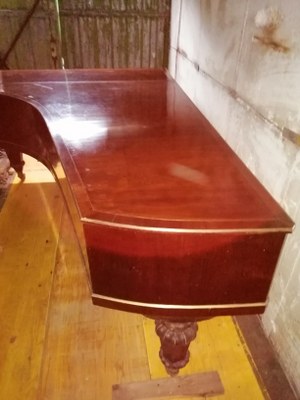
Emerich von Betsy began manufacturing quality pianos around 1852 in Vienna, Austria. Production continued through 1871. They won awards at the 1854 German Exposition for Industry and Trades.
Emerich Betsy has a long history in piano building.
The family was a friend to two students of Beethoven and built custom pianos for them. Emerich Betsy was generally considered among the most prestigious piano makers in Austria, building only a few pianos per year. They believed in doing all the work by hand.
Emerich Betsy pianos were constructed using a lot of burl wood, which is relatively hard to find, and most pieces have hand-carved gilt accents and pearl inlay. Each was custom made to fit the height and body type of the buyer. This was truly a musical instrument for the wealthy. Many believe that this is the ultimate piano for appreciating the works of the Old Masters. Brahms was said to have composed on an Emerich Betsy, as were two students of Beethoven.
Emerich Betsy pianos are not well known. This is more than likely attributed to the few pianos made during the life of the company, the loss of these great treasures in Europe during both world wars, and each piano being so specifically designed to fit its original owner, which makes resale difficult.
Emerich Betsy pianos were produced at a Piano Factory in WEIN, (address - Wieden, Mitterstein NO.13) around 1852 in Vienna, Austria. Production continued through 1871. They won awards at the 1854 German Exposition for Industry and Trades. Emerich Betsy has a long history in piano building. The family was a friend with 2 students of Beethoven and built custom pianos for them. Emerich Betsy was generally considered among the most prestigious piano makers in Austria, building only a few pianos per year. They believed in doing all the work by hand.
Many attest Emerich Betsy is the ultimate piano for appreciating the wonderful music of Brahms and other great composers of his era who composed on this type of piano. The music appears clean & crisp, a clarity which cannot be achieved with an over-strung American piano that often tends to blend musical colors together. These straight-strung, large European grand instruments possess specific tonal colors in the individual registers of the piano, coupled with the front-to-back orientation of the soundboard grain.
The musical sound they produce cannot be reproduced by any other piano on the market today or that has been manufactured in the last 80+ years. Both Beethoven and Bach played on similar pianos. The paino owned by the Hart Family Estate was first sold to one of Beethoven’s students, who played on it until his death. It is very possible Beethoven himself played on that particular piano when giving him lessons. Other Emerich Betsy pianos may have a similar historical story to them, because these pianos were custom made for only the most wealthy and most probably very devoted pianists.
It is most unusual that a piano maker, capable of building such large pianos and to such a high degree of precision with the best of materials and deftly perfect workmanship, is not well known. This seems attributable to the few pianos that were made, the loss of great treasures in Europe during both World Wars, and each piano being so specifically designed to fit its owner that resale of them would have been taxing.
As a fully restored antique, these grand pianos have a rather high value to a collector and to the practiced pianist. Fully restored Emerich Betsy pianos have sold for as much as $54,000.
Family Genealogy Records - FamilySearch.org
Betsy Emerich: Daughter of John Casper Emerich and Christine Degrate, Born 1785John Casper Emerich: Son of John Adam Emerich and Maria Barbara Riegel, Born 1761
Below can be seen pictures of the 21 remaining Emerich Betsy pianos known to be in existence.
Played on an Emerich Betsy Paino
Richard Burnett tribute - Hammerwood - Beethoven 109 Chopin 2 sonata unequal temperament fortepiano
| Owner: Hart Family Estate | Location: Tampa, FL; USA | Contact: eMail |








The piano is in a very good condition!
| Owner: Mr. De Crom | Contact: eMail | Location: Antwerp, Belgium |
This Betsy piano is build in 1854 and was purchased 26 years ago from antique store Müllendorff in Antwerp Belgium. The current owner had the piano delivered to his castle, which also happens to be in the province of Antwerp. During the delivery of the Betsy piano, the beautiful staircase of the old castle turned out not to withstand the weight of the weight so it had to be reinforced. This piano was used as a play-in piano for the candidates of the many Cantabile (contest) piano concerts that were given at the castle.
The piano is in a very good condition and currently for sale.
Price: €4,500 (Euro).






Beautifully Restored!
| Owner: Corey and Amy Roush | Location: Bethesda, Maryland |
Contact:
Phone: |
This piano is located in Bethesda, Maryland.
It was originally purchased in Italy at an Antique fair in 2014,
and then restored by artisans in Sassuolo and Bologna, Italy.






Available for Sale!
ONLY $20,000 USD
| Owner: Ivica Ivancic | Location: Croatia |
Contact: eMail
Phone: Unknown |
More pictures available upon request




Needs some restoration work.
Exterior is in good condition!
| Owner: Csaba Varga | Contact: eMail | Location: Nograd, Hungary |
This piano is located in Nograd, Hungary
This piece needs some restoration work.
The exterior of the piano is in good condition.






Available for Sale!
$48,000 USD
| Owner: Norbi Lang | Location: Romania | Contact: eMail |
More pictures available upon request




Available for Sale!
ONLY $12,000 USD (As-Is)
| Owner: Clara Radu | Location: Bucharest, Romania |
Contact: eMail
Phone: 0040723536447 |
Requires Restoration
More pictures available upon request




| Owner:King-Poly European Antiques | Location:Shanghai, China | Contact: Jeremy Guan eMail; eMail |







| Owner: Unknown | Location: Poland | Contact: eMail tel. +48 62 501 30 30 |





| Owner: Unknown | Location: Unknown | Contact: |

| Owner: Unknown | Location: Vienna | Contact: |

| Owner: Paolo Zorzan | Location: Italy | Contact: eMail |


| Owner: Unknown | Location: Albany, CA; USA | Contact: eMail |

| Owner: Bruno Avico | Location: Italy, Piemonte (Mondovì) | Contact: eMail |



| Owner:Carlo Ceccon | Location: Italy | Contact: eMail |




| Owner:Laido | Location: Brazil | Contact: eMail |




| Owner:Timea Gécs | Location: Hungary, Békéscsaba | Contact: eMail Timea Gécs |




| Owner:Christian Hummer |
Location: Vienna, Austria | Contact: eMail Christian Hummer |
| A family-myth says that Bétsy built this piano for himself. | ||




| Owner:Andras Dobri |
Location: Hungary | Contact: eMail Andras Dobri |
|
Our piece needs some restoration work. It is an earlier one built in 1854. The piano has been in the family at the very least from 1940 and was tuned approximately till 1990. The piano is in Hungary. We can help with shipping in Europe, but we can as well help in arranging a container delivery worldwide. | ||




| Owner:Baumann Gerhard |
Location: Wien (Vienna) | Contact: eMail Baumann Gerhard |
|
The first known owner of my instrument is my paternal grandfather, Mr. Moritz Baumann, school director, residing in Wien, Wasnergasse. The parents of my grandfather, so my great-grandparents were Mr. Franz Baumann, firm officials and Ms Katharina, born of Posch. It`s possible my grandfather inherited the piano from his parents. My sister and I learned from 1939 to 1948 on to play the piano. At the end of the Second World War it received damage by shrapnel. Fortunately, the only damage to the foot is on the bottom right. | ||




| Owner:Tobiasz Swiderski |
Location: Pulawy, Poland | Contact: eMail Tobiasz Swiderski |



| Owner:Milos Brinovec |
Location: Brestanica, Slovenia | Contact: eMail Milos Brinovec |
|
Our piece needs some restoration work. The sound from it is still AMAZINGLY GOOD! Contact: Katarina Pozun Brinovec Stolovnik 24, 8280 Brestanica, Slovenia Telephone # 00386 41 229 340 | ||




Available for Sale!
ONLY $17,000 USD
| Owner:Lowel Hotel |
Location: Lowell Hotel | Contact: eMail Tatuli Shavishvili |
|
Tatuli`s parents bought this piano from a family who left Germany at the period of World War 2. They lived in Georgia after that. Contact: Tatuli Shavishvili Telephone # +995 593 375 465 Telephone # +995 32 2 92 01 77 | ||




Loved for ages!
| Owner:Derek and Etelka Nagybanyaine Tough |
Location: Miscolc, Hungary | Contact: eMail |
|
This beautiful instrument has been in Etelka`s house in Miscolc Hungary since it was given to her on her birthday when she was just a small girl. Her mother had purchased it from their neighbour, Dr. Foldes Josef. | ||






Viva Verona!
| Owner:Silvana De Bortoli |
Location: Verona, Italy | Contact: eMail |
|
The piano has always been in a family of the upper middle-class in Verona (Italy). The exterior of the piano is in good condition, and the inside needs restoration. | ||






Additional Information
Emerich von Betsy began manufacturing quality pianos around 1852 in Vienna, Austria. Production continued through 1871. They won awards at the 1854 German Exposition for Industry and Trades.
Emerich Betsy has a long history in piano building.
The family was a friend to two students of Beethoven and built custom pianos for them. Emerich Betsy was generally considered among the most prestigious piano makers in Austria, building only a few pianos per year. They believed in doing all the work by hand.
Emerich Betsy pianos were constructed using a lot of burl wood, which is relatively hard to find, and most pieces have hand-carved gilt accents and pearl inlay. Each was custom made to fit the height and body type of the buyer. This was truly a musical instrument for the wealthy. Many believe that this is the ultimate piano for appreciating the works of the Old Masters. Brahms was said to have composed on an Emerich Betsy, as were two students of Beethoven.
Emerich Betsy pianos are not well known. This is more than likely attributed to the few pianos made during the life of the company, the loss of these great treasures in Europe during both world wars, and each piano being so specifically designed to fit its original owner, which makes resale difficult.
Contact Us